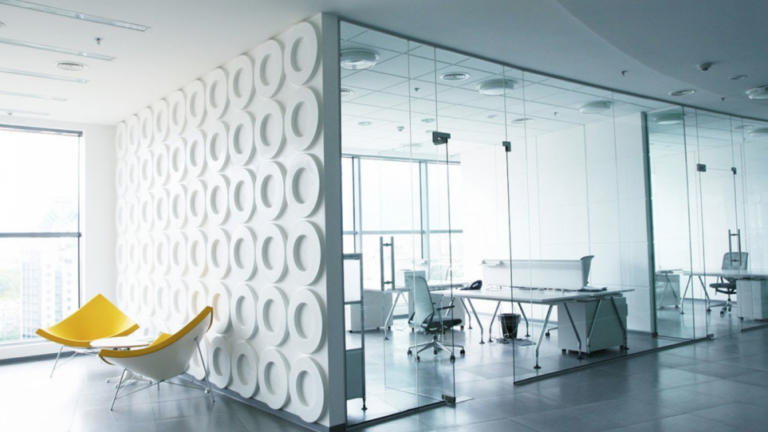Office interior design and workspace architecture have been evolving significantly in recent years, driven by changes in technology, work culture, and employee preferences. Here are some current trends:
· Flexible Spaces: Offices are moving away from fixed desks to flexible layouts that can be easily reconfigured based on the needs of employees. This includes open-plan areas, hot desking, and quiet zones for focused work.
· Biophilic Design: Integrating nature into the workspace is a growing trend. This includes natural light, indoor plants, living walls, and natural materials. Biophilic design has been shown to improve productivity, creativity, and well-being.
· Activity-Based Working (ABW): ABW focuses on creating different work zones for various activities such as collaboration, concentration, relaxation, and socialization. Each area is designed to support specific tasks rather than a one-size-fits-all approach.
· Ergonomics and Well-being: There’s a strong emphasis on ergonomic furniture and design to promote employee health and well-being. This includes adjustable desks, ergonomic chairs, standing desks, and spaces designed to encourage movement throughout the day.
· Technology Integration: Offices are increasingly incorporating advanced technology seamlessly into their design. This includes wireless charging stations, smart lighting, IoT (Internet of Things) sensors for environmental control, and integrated AV systems for meetings and presentations.
· Sustainable Design: Sustainability is a key consideration in modern office design. This includes energy-efficient lighting, recycled materials, green building certifications (e.g., LEED), and waste reduction strategies.
· Privacy Solutions: Despite open-plan layouts, privacy remains important. Design solutions include phone booths, soundproof pods for meetings or private calls, and flexible screens or dividers.
· Homely Atmosphere: Offices are being designed to feel more like home to create a comfortable and inviting atmosphere. This can include lounge areas with sofas, cozy breakout spaces, and kitchens or cafes with refreshments.
· Art and Aesthetics: Incorporating art and aesthetics into office design can enhance creativity and inspire employees. This includes local art installations, murals, and aesthetically pleasing decor that reflects the company’s culture and values.
· Post-Pandemic Considerations: Following the COVID-19 pandemic, there’s increased focus on hygiene and safety. Designs may include touchless technology, improved ventilation systems, and layouts that support social distancing when necessary.
These trends indicate a shift towards creating dynamic, adaptable, and employee-centric work environments that foster collaboration, creativity, and well-being. As technology and work habits continue to evolve, so too will the trends in office design and workspace architecture.
The modern office design and workspace architecture is undergoing a significant transformation, driven by the need for flexibility, collaboration, and employee well-being. The latest trends focus on creating spaces that promote creativity, productivity, and comfort. One notable trend is the incorporation of biophilic design, which incorporates natural elements such as plants, natural light, and ventilation to improve air quality and reduce stress.
Another trend is the use of modular furniture and flexible workspaces that can be easily reconfigured to accommodate different work styles and team sizes. Additionally, the rise of virtual and remote work has led to an emphasis on creating hybrid spaces that seamlessly integrate in-office and remote work environments. Overall, the future of office design is centered around creating spaces that are not only functional but also aesthetically pleasing and supportive of employees’ overall well-being.

